On February 1, 2013, Hiroshima University established two new programs: the “Distinguished Professors” (DP) program and the “Distinguished Researchers” (DR) program. Individuals who are part of these programs are recognized as senior and junior faculty members respectively, who are engaged in extraordinarily distinguished research activities.
A Conversation with Distinguished Researcher Yousuke Ooyama
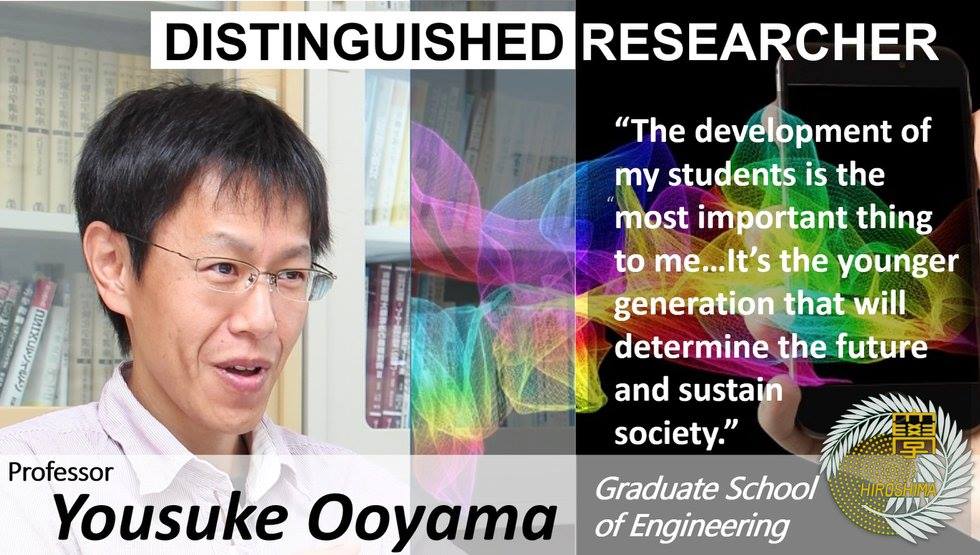
What is your name and specialist field?
My name is Yousuke Ooyama and my research field is functional-dye chemistry. Functional dye chemistry investigates pigments and their potential for use in applications such as organic light emitting devices and organic solar cells. I also work on developing organic compounds that emit color when excited by stimuli. Essentially, I try to make the world a better place through color!
Is this a new field of study?
Yes, we are growing. Our laboratory at HU began operating this year, and is made up of myself and an associate professor. We will take in our first international student this autumn.
Can you tell me about some of the projects you are working on?
One of our main projects is the development of dye-sensitized solar cells. While the solar panels most of us are familiar with are composed of silicon and are black, dye-sensitized solar cells use dye solutions, and metal oxide electrodes– aesthetically they have a vibrant, colorful appearance which can be incorporated into building design.
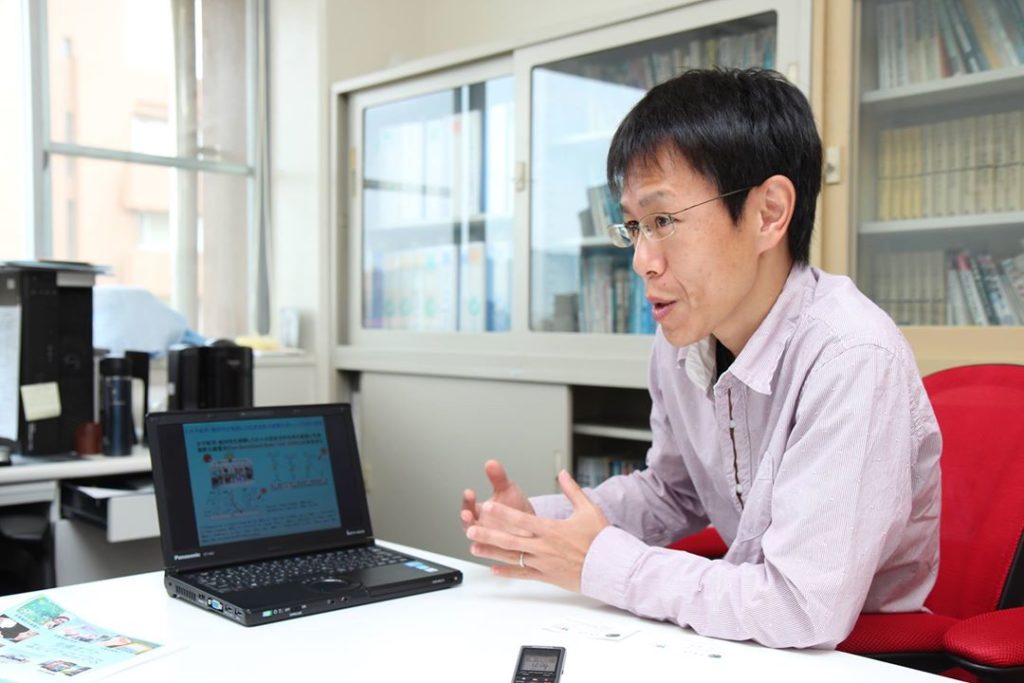
They are also far more economical to produce than conventional types. They also operate differently. The electrons within the organic dye become excited when exposed to sunlight and are attracted to metal oxide electrodes, so that a charge builds up. This charge then flows into an external circuit where it is used to power electrical devices. The spent electrons return to the organic dye to repeat the process. While cheaper to produce, one major disadvantage is their inefficiency. That is what I have been working on in the lab. While past designs have incorporated natural dyes sourced from leaves etcetera, we are synthesizing new organic dyes that are much more efficient when used in conjunction with a titanium dioxide electrode. These hybrid cells using an inorganic substrate with an organic dye are a completely new type of solar cell and could prove a game changer for green energy provision.
I look forward to seeing buildings in the future covered in these colorful panels! Where else are color compounds being put to work for the betterment of society?
– Medicine
We develop dyes for medical applications called photodynamic therapies. Theserapies use light and light-sensitive dyes to induce cell death– especially of cancer cells. Some organic dyes are photosensitizers and become very energetic when exposed to near infrared light, resulting in oxygen being produced. This high-energy oxygen is damaging to tumors. We introduce such dyes to afflicted parts of the body, where they can be activated using eternal lasers.This can help treat cancer in a short time period, and with minor side effects.
– Smart Materials
Other projects include the development of fluorophores – chemical compounds that can re-emit light upon light excitation. These smart materials exist as one color in a solid state – but change color when an external stress is applied– such as scratching or heating. I have christened these “smart” materials, mechano-fluorochromes– or MFCs. The name is catching on and is being adopted by researchers around the world.
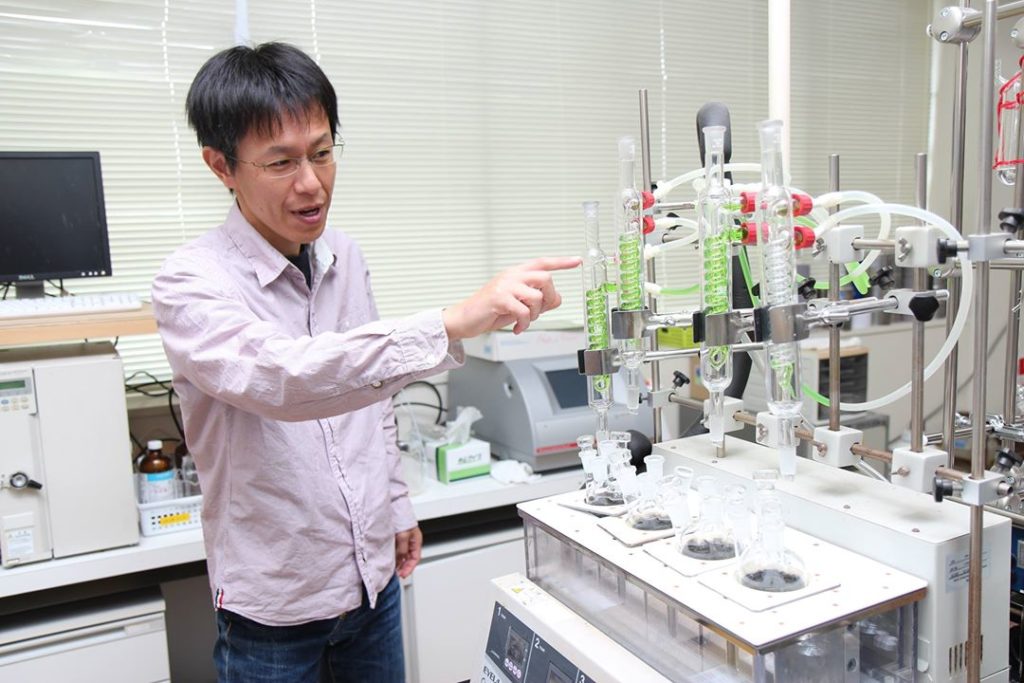
– Medicine
We develop dyes for medical applications called photodynamic therapies. Theserapies use light and light-sensitive dyes to induce cell death – especially of cancer cells. Some organic dyes are photosensitizers and become very energetic when exposed to near infrared light, resulting in oxygen being produced.This high-energy oxygen is damaging to tumors.We introduce such dyes to afflicted parts of the body, where they can be activated using eternal lasers. This can help treat cancer in a short time period, and with minor side effects.
– Smart Materials
Other projects include the development of fluorophores – chemical compounds that can re-emit light upon light excitation. These smart materials exist as one color in a solid state – but change color when an external stress is applied – such as scratching or heating I have christened these “smart” materials, mechano-fluorochromes – or MFCs. The name is catching on and is being adopted by researchers around the world.
– Water detection
We are also working on developing sensors to detect water.The compounds involved only exhibit fluorescence properties when exposed to water. This of course could be useful for everyday situations, indicating where liquid has been spilled for example– but more crucially it could be applied to electronic devices, chemical solutions and industrial processes where water contamination can have major implications.
– Agriculture
In agriculture, such fluorescent dyes that change color when water is present, could be introduced into plants to indicate, through color changes, when water is required or not.Sensors for detecting toxic hydrogenated compounds such as chloroform are also in process.
– Modern technology
Of course, we all make use of organic dyes every day; OLEDs, or Organic Light Emitting Devices incorporate screens made up of compounds, that when excited by electrical charge emit color.Example include digital displays in television screens, computer monitors, tablets and phones etcetera.It allows for very thin screens and we are always working to improve color and resolution.
So, there is a whole lot of research going on here! All the compounds involved require synthesis in the lab through many small step changes to molecular structure. Maybe 10, or 20 steps are involved for a single compound and this can take a student half Therefore, I really try to encourage my students to publish their work in international journals so that the important work being done by them at HU reaches as wide an audience as possible.
That all sounds very impressive! Of all the projects you have worked on, which are you most proud of?
The development of my students is the most important thing to me– I do not focus on myself. My supervisor once said to me if you become a professor, you must use all your effort to promote the students. It's the younger generation that will determine the future and sustain society. I don't need to focus on myself – I am already a professor… Of course it would be great to get the Noble prize someday! But it is more important for me to promote the students and hope they do well.
What might you be doing if you had not become a chemist?
Sometimes I think I'd like to work as something else, I like cooking– perhaps a chef! I have two daughters and I cook for them – udon noodles and cakes sometimes. If I retire at 50 I would like to have a small restaurant in Kagawa where I am from. Udon is very famous there.
So you are from Kagawa, can you tell me how you got here from there?
Even as a child, I found chemistry very interesting. I graduated with a masters from Kochi University on Shikoku island before working at Sanyo Chemical Industries for one year. Then I decided to return to studying and joined a PhD course, again at Kochi. Years there, I joined Hiroshima University in 2005. I became an assistant professor, then an associate, and I became a professor this year. That whole time my studies have revolved around functional dye chemistry.
Have you ever studied overseas?
Yes, but only for three months – it was good.In Dresden, Germany. My professor there said I worked too hard! I met many good colleagues there from India, Jamaica, Spain and other places. It was an interesting experience.
Do you recommend students spend some time studying abroad?
None of my students has, but it would be good if they did. I think they would get into good colleges and make a good impression. The benefit for us is that when they return to Japan they will bring the skills they pick up at leading international institutions back to our labs.
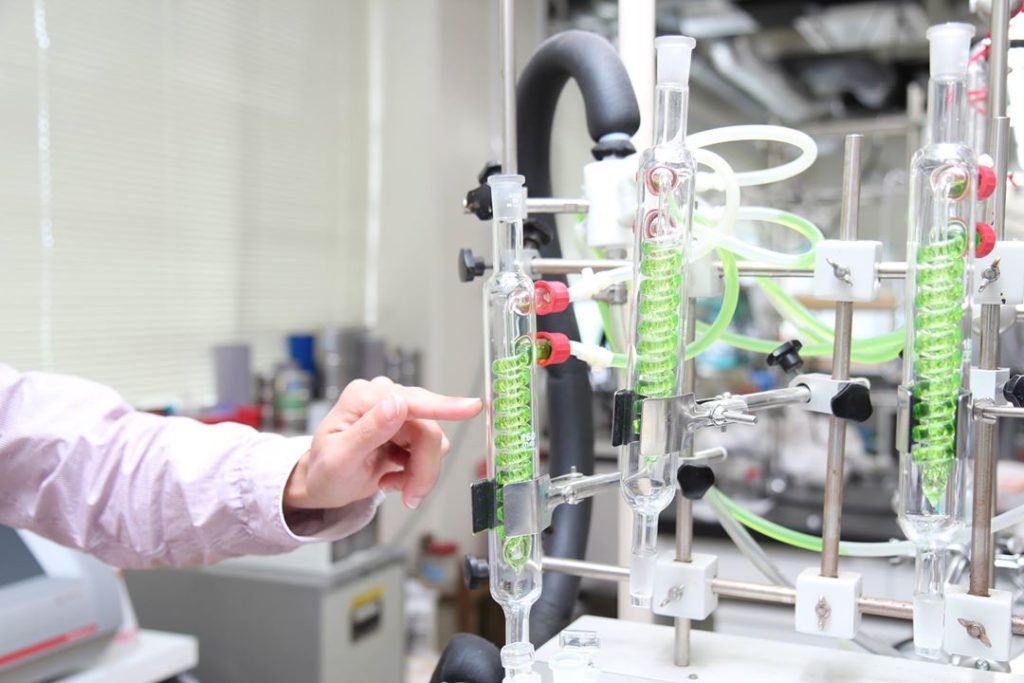
What advice do you have for students that come to HU from further afield?
They should work hard but they should also enjoy themselves and experience local culture. When they return to their hometown or country, they should promote Hiroshima University.
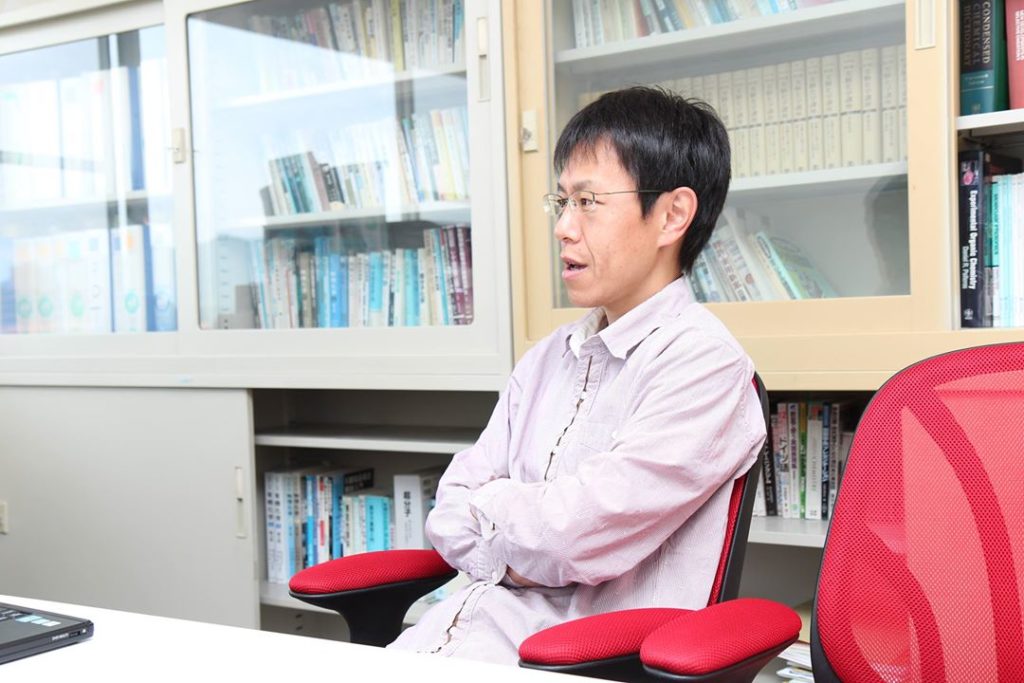
Read more articles on Distinguished Professors / Researchers here
Written by Richard J. O'Connor (Hiroshima University Science Communication Fellow)
Find out more about Professor Yousuke Ooyama here: http://seeds.office.hiroshima-u.ac.jp/profile/en.614bfa36ecb61b99520e17560c007669.html

 Home
Home